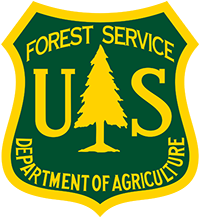As today’s environmental problems become intertwined between built and natural landscapes, green infrastructure acts as a bridge to sustainable development- adapting conventional engineering practices with innovative technology.
Green infrastructure replaces traditional “grey” systems (e.g., roads, curbs, gutters, and rooftops) with soil, vegetation, and engineered mediums.

Green infrastructure facilities, such as rain gardens, ecoroofs, and porous pavement, mimic the natural water cycle and provide additional social, economic, and environmental benefits.
This online course features case studies, demonstration projects and interactive tools to prepare both novice and experienced professionals with the knowledge and resources they need for successful green infrastructure implementation.
As a result of this course students will be able to select green infrastructure best management practices, communicate with project stakeholders, and accomplish multiple project goals.
Funding support for the development of this course was made possible through the USDA Forest Service Western Competitive Grant Project.
Dr. Jenna Tilt is a research social scientist at Oregon State University in the Geography Program within the College of Earth, Ocean and Atmospheric Sciences. She has previously worked as a natural resource lands planner for King County, Washington. Her research focus intersects the relationship between environmental management, land use planning, and human behavior. Dr. Tilt’s current research centers on how rural communities adapt and adopt green infrastructure best management practices for stormwater management.
Christine Johnson is a Natural Resource Specialist for the Urban and Community Forestry Program at Oregon Department of Forestry. As a graduate research assistant at Oregon State University, Christine studied interdisciplinary green infrastructure trainings in the Pacific Northwest. Christine is a strong advocate for community engagement and is an active volunteer with the Oregon Museum of Science and Industry (OMSI) and Friends of Trees.
Maria Cahill is a Principal and Green Infrastructure Consultant for her firm Green Girl Land Development Solutions LLC. Maria has collaborated on interdisciplinary teams to implement LID in engineering and landscape architecture offices and her own firm for over 20 years. Maria has trained jurisdictional staff throughout Oregon and provided technical resources and tools to help them meet their state water quality regulations. She has also taught numerous classes at colleges and to industry professionals about stormwater.
Paul D. Ries has over 25 years of urban forestry experience at the municipal, state, national, international, non-profit and academic levels. Currently, he is an Urban Forestry Instructor and Extension Specialist in the College of Forestry at Oregon State University and manages the Urban and Community Forestry Assistance program for the Oregon Department of Forestry. Paul holds a Type 1 national qualification as a public information officer and serves on a state Incident Management Team for wildfires.
